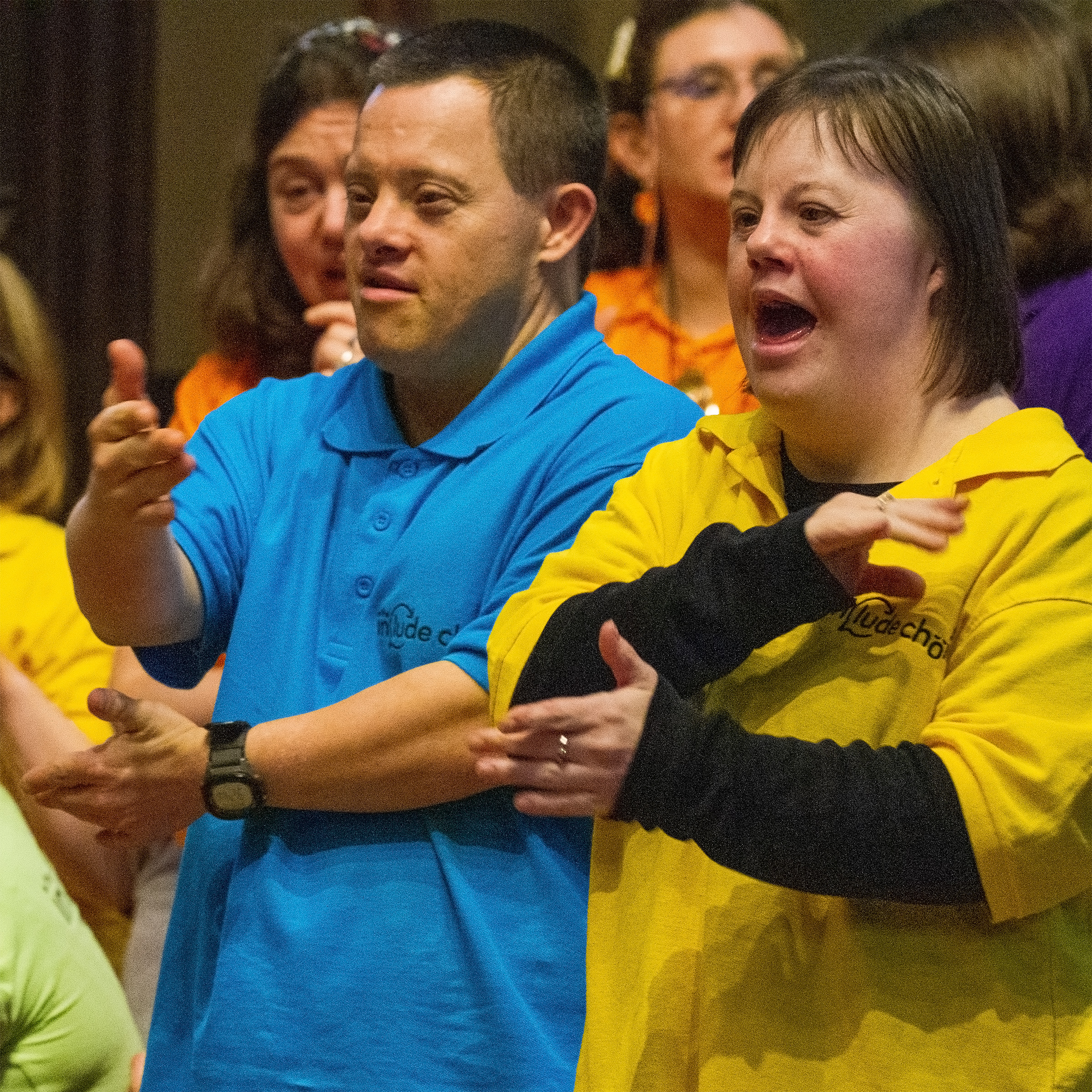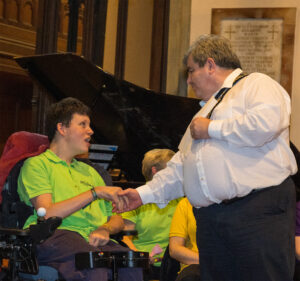This month’s guest post comes from Alix Lewer, CEO of Include, a charity that works to encourage people and organisations to communicate in ways that include everyone. Here she shares tips for how to communicate in a kind, inclusive way – all tips come from the Kind Communication song written by the Include Choir members.
‘Kindness is the language that the deaf can hear and the blind can see.’
Mark Twain
Kindness is all about connection. Loneliness is one of the biggest challenges to our society – and a kind word can make the difference between feeling alone and knowing you belong.
But are words always enough to reach people?
The Mark Twain quote alludes to the isolation experienced by people with visual or auditory impairments and how kindness makes a connection. But there are other forms of isolating impairments which are less well recognised.
People with learning disabilities and autism frequently have what’s called a ‘cognitive communication impairment’ which means that, although their hearing may be fine, it may be hard for them to make sense of spoken words. People with dementia and other acquired neurological conditions experience the same thing.
Have you ever been in a situation where you were not able to translate words into meaning (perhaps on holiday, in a meeting, or in a conversation that went over your head).
How did it feel?
Chances are you felt excluded, isolated, unsure. You may have ‘switched off’ from the conversation, and withdrawn, because you lacked the confidence to contribute, or were ashamed to admit that you didn’t understand.
This is what can happen to people with cognitive communication impairments, leaving people isolated and alone. What’s more, with barriers to accessing information and services, people can experience significant inequalities in all aspects of their lives.
Ways to adapt your communication
The good news is that we can all adapt our communication to make it easier for people with communication needs to understand. Individuals, businesses and services are waking up to this.
There are organisations which can help:
- Communication Access UK provides free online training in communication disability. In exchange for undertaking annual staff training, organisations can display a blue ‘Communication Accessible’ sign (similar to the more familiar ‘Wheelchair Accessible’ sign), giving customers confidence that staff will be able to help them.
- For people with learning disabilities, the Makaton charity has a “Makaton Friendly” accreditation scheme, which helps organisations and communities to be more accessible.
- Include provides opportunities to learn about inclusive communication in a fun, musical setting with the Include Choir, and provides further training for a range of organisations.
6 top tips from the Kind Communication song
There are also things we can all do. These top tips come from members of The Include Choir – who wrote a signed song to help us remember what makes Kind Communication .
Think Visual
Unless someone has a visual impairment, showing someone the object, you’re talking about, using pictures, or even using your hands to gesture or use Makaton signs can really help someone ‘tune in’ and understand.
It’s common sense really – symbols on road signs help us process information quickly (and we all know the benefit of the menu with photos when we are abroad!)
Don’t Forget your Body
People who find it hard to process language are often extremely good at understanding body language and facial expression – so it’s important to keep your body language open and encouraging. A smile can mean so much.
Easy does it
The words that you choose matter too. Try and break up your speech into short chunks and think if there is an easier way of saying it. You may need to rephrase things more than once.
Sometimes, when we are nervous or self-conscious (which we may be if speaking to someone with a communication need), we might speak faster. Too many words and a fast rate of speech just makes it harder for the listener with a communication need.
Check in
Ask someone what would help them understand or express themselves. Ask if they’ve understood.
Time
Allowing people more time to process the words you say is kind communication. People may need much more time than you realise.
For people who are ‘non-verbal’, and don’t understand or use many words at all – spending time with them and being creative about communication is still crucial. Communication doesn’t need to be all about words; eye contact, touch, interacting with objects / the environment and body language all speak volumes.
Easy Read
Kindness can be a feature of written communications as well – it’s so easy to exclude people through dense text, difficult words or a hard-to-read font. Taking time to adapt resources means you can be kind through accessible written communication too.
The Include Champions (a lived experience consultancy team, with learning disabilities and autism) have created Easy Read Guides to listening and inclusive communication to help people find out more.
Today is ‘Time to Talk’ day – a day designed to promote conversation and communication to benefit everyone’s mental health. Let’s also think about the communication which uses more than words to include people – the biggest kindness of all.
Images are provided by Graeme Knibbs (Include Volunteer).
Kindness is one of Include charity’s values. Follow them on social media to find out more and get in touch anytime via email: info@include.org
If you would like to write a guest post, please get in touch.


